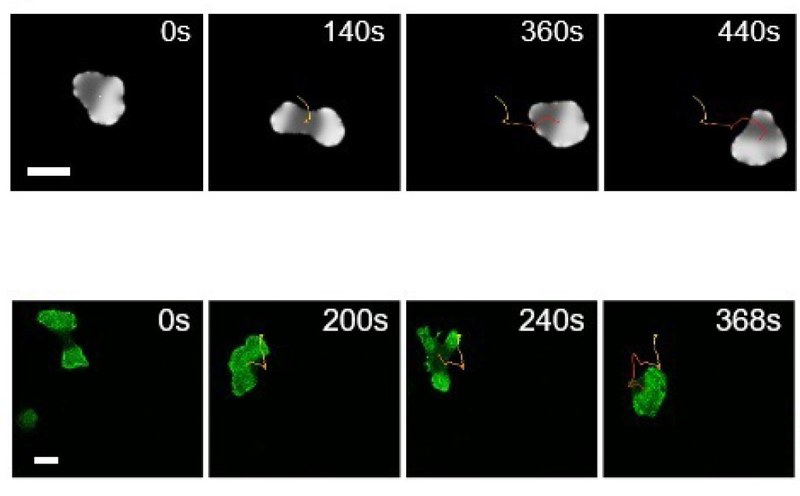Eduardo Moreno defends his thesis on the modeling of amoeboid cell crawling
May 31, 2022
Eduardo Moreno Ramos defends his thesis supervised by Sergio Alonso at the Computational biology and Complex System research group on May 30 at the Universitat Politècnica de Catalunya. The thesis, entitled "Computer modeling of the polarity and amoeboid motion of living cells", employs an additional phase field model to couple the biochemical reactions inside the cell with membrane deformations.
Cell motility is important in many biological processes. Some examples relay in epidermal cells moving towards lesions during wound healing, neutrophils cells migrating towards sites of bacterial infection as part of the immune response, or sperm cells following chemical gradient to reach the ovum. The work focus on the mathematical description of amoeboid crawling-like movement which is one of the most common type of locomotion in eukaryotic cells.
One well studied system for this purpose is the amoeba Dictyostelium Discoideum, which is a eukaryotic cell that moves in presence (chemotaxis) or absence of external signals. Experiments show that Dictyostelium Discoideum present different shapes during motion, and perform directed motion inside micro channels.
A mathematical nonlinear reaction-diffusion model in combination with a dynamic phase field is proposed to reproduce different motility scenarios as amoeboid and fan-shape. Experimental data related with the dynamics of Dictyostelium Discoideum were supplied by the Biological Physics Group at the University of Potsdam. A comparison between the numerical simulations and live cell experiments of Dictyostelium Discoideum cells under different developmental conditions permits the optimization of the model.
The work gives rise to a computational synthetic cell that mimic the dynamics of experimental cells. The use of numeric methods and mathematical models helps with the understanding of the biological process involved in cell locomotion.

Share: